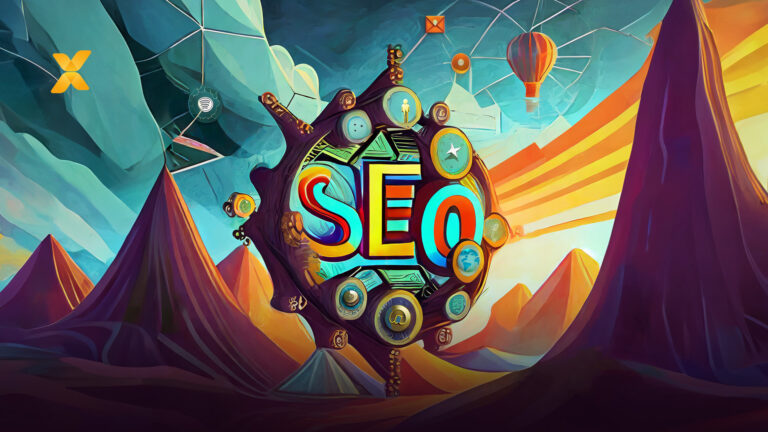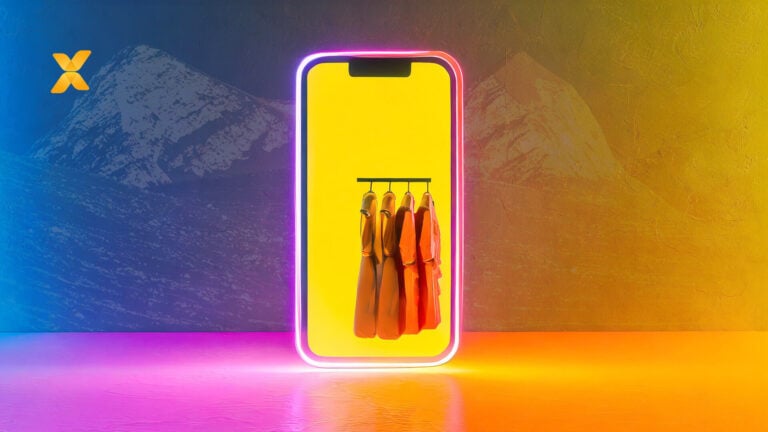How can digital commerce activities feel more personal for consumers? This is a question ecommerce retailers often grapple with. In brick-and-mortar stores, personalized experiences mainly involve interacting with store personnel, who can show customers the most relevant products. In digital commerce, however, it’s less straightforward.
Luckily, digital commerce has one big advantage: data. That’s why it’s crucial that companies collect (the right) customer data and use this information to improve the customer journey. In this article, we examine the benefits of digital personalization for digital commerce and explore five personalization strategies that will motivate your visitors and influence their behavior.
TABLE OF CONTENTS
- Why personalization at scale matters in digital commerce
- Where to start with personalization at scale
- 5 strategies for personalization at scale
- How Vaimo can help
Why digital personalization at scale matters
Personalizing customer experiences in digital commerce is now more important than ever before. As more companies are optimizing the customer journey for individual visitors, personalization has become a driving force behind consumers’ decision-making. In fact, 80% of shoppers are more likely to buy from a company that offers personalized experiences, and 59% of consumers even say that personalization influences their shopping decisions.1
When you have a lot of visitors and a broad product offering, it can seem complicated to cater to everyone’s preferences. At the same time, the stakes are higher than ever to get personalization right, and it’s a crucial decision-making factor for your customers. Here are three reasons why your company should be implementing digital personalization at scale:
Customers expect a personalized experience
Online shopping has become so ingrained in our daily lives that our expectations are incredibly high. With so many options out there for consumers, competition is tough for ecommerce brands, so meeting these expectations is paramount. The more relevant companies can make a visitor’s experience, the more those visitors feel like they are in the right place on your website or app. Besides, you can’t lag behind when your competitors offer a hyper-personalized experience.
Customers are more likely to make repeat purchases
Acquiring new customers can be expensive, so retaining your existing customer base is all the more important. Seventy-eight percent of consumers say that personalized communications make them more likely to repurchase.2 This demonstrates that digital personalization at scale is a real driver of loyalty and creates a deeper connection between brands and customers. When your customers feel heard and appreciated, there’s a high chance they’ll come back repeatedly and won’t look for alternative brands.
Personalization removes distractions
You might have come across the term “choice paralysis.” This refers to the phenomenon where shoppers have more difficulty deciding what to buy when they are faced with a large product offering. Indeed, there’s such a thing as too much of a good thing, even in digital commerce.
Personalization is a great antidote to choice paralysis. By removing messaging and products that aren’t relevant, your visitors are more likely to see products they would actually be interested in buying. In turn, the products and messaging that are shown are all the more impactful.
Where to start with digital personalization at scale
There’s no one-size-fits-all solution for personalization at scale. Everything depends on your target audience and customer preferences. Personalization efforts should be focused on segments, meaning it’s important to have access to reliable customer data.
A common pitfall is the idea that more personalization is always better. However, that’s rarely the case. The right strategy at the right step in the customer journey is more effective than implementing many different types of personalization in hopes that one of them will work. In personalization, quality wins over quantity.
The best way to proceed with digital personalization at scale is to remember that your web pages have limited space to show banners and other content. Use that real estate efficiently to see your personalization efforts pay off. You should constantly challenge your strategy, as a new hypothesis could yield even better results. Refining is often more influential than adding.
Another important aspect to remember is that personalization at scale can increase in complexity. At the start, you might only personalize based on one factor, such as the country, device, or whether you’re addressing a new or existing visitor. As your personalization strategies expand, automated personalization could offer even more opportunities, using what your visitors’ online behavior tells you is relevant for them.
5 strategies for digital personalization at scale
What does digital personalization at scale look like in practice? Here are five strategies to personalize the customer journey for new and existing customers.
1. Place weight on USP messaging for new visitors
You only get one chance to make a first impression, and that counts as much for your website as it does for you as a person. If a new visitor ends up on your website or app, you have to assume they don’t know anything about your brand and product offering. So, how can you reassure this visitor that they are in the right place?
This is where your USPs can do the talking. Ensure your strongest messaging is highly visible to new visitors on your website or app. A straightforward personalization strategy to achieve this is to add a sitewide USP bar at the top of the page, for example.
2. Encourage customers to register or log in
Nudges are subtle ways to influence consumer behavior. You can nudge consumers directly, for example, with pop-ups, or indirectly, by demonstrating a product’s popularity using social proof, such as a “Bestseller” label.3 These nudges can take many shapes and forms, but a good way to use them in the context of personalization is to encourage visitors to register or log in.
When visitors create an account in your webshop, they share relevant data that can directly be used for digital personalization at scale. As long as the information is relevant, you can ask new users about their age bracket, gender, category preferences, and much more. Therefore, registering and logging in is one of the best ways to ensure an optimal experience for visitors. Still, it can be hard for companies to convince visitors to perform this action.
A personalization strategy with a subtle nudge to create an account or log in can make a big difference. It’s crucial that the nudge draws the visitor’s attention without being distracting and that it’s displayed at the right time—not too early, not too late. You could also nudge visitors to view products they have added to their basket, subscribe to your newsletter, or sign up for your loyalty program, whichever is most relevant at that specific moment.
3. Highlight deals for relevant categories and custom top categories
Remember when we talked about choice paralysis? It doesn’t just refer to products but also occurs when visitors are presented with many categories. Visitors naturally gravitate towards specific categories they are more interested in, which is closely linked to buying intent. In the Adobe realm, this is referred to as category affinity.4
Companies can capitalize on category affinity by highlighting deals within relevant categories for individual shoppers. For example, don’t display a generic banner with deals on coffee if a customer has never purchased coffee before and has shown no interest in this category. Instead, display content about specific categories they do have affinity with.
It’s important to note that this type of personalization goes much further than simply displaying the last category a customer has viewed. It also takes into account recency and frequency, among other things. True personalization uses a combination of logic and adds more factors as it learns more about shoppers.
When the buyer intent is already there, this personalization strategy might only move the needle a little in terms of conversion. However, combining personalization with upselling principles could entice shoppers as well. For example, if a customer has a pattern of buying coffee of a certain brand at the end of every month, you could try displaying slightly more expensive products of the same brand or category, knowing their category affinity with coffee.
Similarly, you can create a personalized experience by displaying an individual visitor’s top 5 or 10 categories. For instance, by replacing alphabetical items in the category menu with a customer’s favorite categories, you facilitate the process of finding and purchasing products they have shown an interest in before. This strategy works best for niche products and companies with many product categories.
4. Feature products in their spending bracket
Most consumers have a budget in mind when browsing products online, and you could opt for a personalization strategy that caters to this. By knowing the average spend of a customer within a specific product category, you can personalize the content for this individual on your website or app. Using a product banner with deals on their favorite brand’s products and within their preferred price range, for example. This information can also support upselling strategies, with deals on products slightly over a customer’s average spending bracket or package deals, for example.
5. Make the selection process easier
Previous purchases can tell a lot about a customer’s preferences. Perhaps there are even patterns in terms of characteristics. By personalizing filters for individual customers, you’re making it easier for them to find other similar products they might be interested in.
For instance, if a customer bought a vanilla-scented candle in the past few months, you could display a filter that shows other candles with the same scent. That way, you’re helping consumers find what type of product they’re looking for—even if they don’t know themselves. Or, if you sell clothes, you could opt to automatically filter results by the clothing size a customer has indicated previously.
How Vaimo can help
Personalization is not magic; it’s data and strategy. And when it comes to data, Vaimo knows how to get the most out of it. We have over 16 years of experience optimizing customer journeys and providing extensive data management solutions for digital commerce. By analyzing your business needs and goals, we bring new ideas, practical solutions, and a clear path to optimizing your digital commerce activities.
Want to improve your customer experience? Personalization at scale is the logical next step. Let’s discuss what it can look like for your business.
Sources
1 – 68 Personalization Statistics Every Digital Advertiser Must Keep in Mind – instapage.com
2 – The value of getting personalization right—or wrong—is multiplying – mckinsey.com
3 – Nudge Marketing: How To Use Nudge Theory To Increase Sales – shopify.com
4 – Category affinity – experienceleague.adobe.com







